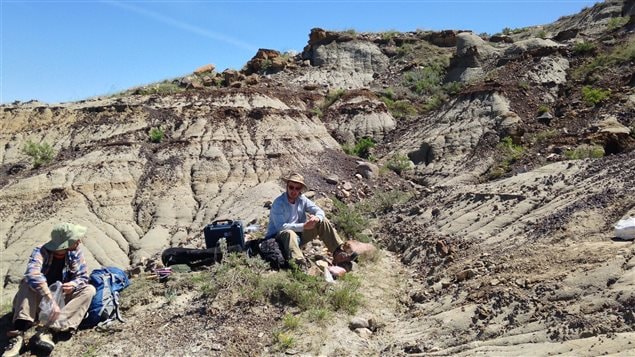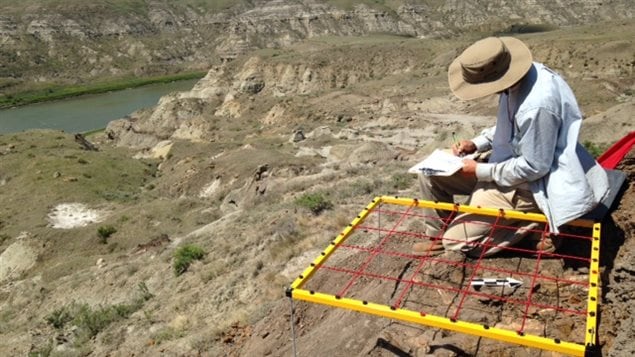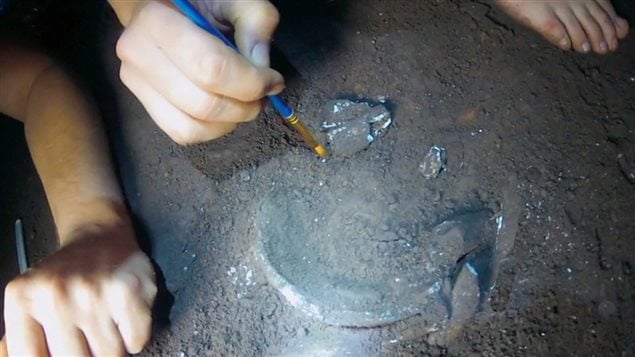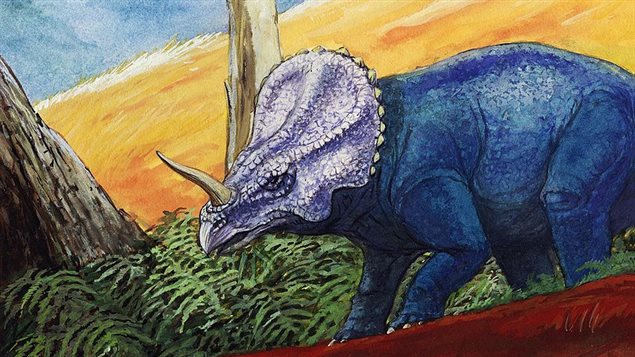A team of paleontologists from the Canadian Museum of Nature is unearthing dinosaur fossils from a massive bone bed in the western province of Alberta. They estimate the area holds the remains of hundreds of thousands of animals who probably died in one cataclysmic event.

Small dinosaurs with horny crests
Chief among them is the Centrosaurus apertus (a relative of Triceratops) which has a bony crest and a single horn on its nose. Nearby is the skull of the similar but rarer Chasmosaurus kaiseni. Digging has revealed a bony crest on the back of its head, two long horns over the eyes, and one on the nose that is just appearing.
At the time these creatures lived, a shallow sea that spanned much of North America. This lush site would have been at the western edge and home to many lowland plants, dinosaurs, turtles, mammals and flying reptiles. There has been some debate about how so many dinosaurs died at once.

Possible cataclysmic flooding
“Probably that seaway would have seen the occasional monsoon or typhoon come through and flood just vast areas of land,” said paleontologist Jordan Mallon from the site. “That’s kind of the current thinking–that these animals were drowned in a big flood effectively.”
ListenSilt coming down from the just-forming Rocky Mountains to the west covered the animals’ remains, preserving them well.

Bones go back to Alberta museum
If all goes well, the Chasmosaurus skull encased in a 1.5-tonne block will be freed and hoisted away by helicopter. It and other bones will be prepared and studied at the Canadian Museum of Nature. They will then be returned to the Royal Tyrrell Museum in Drumheller, Alberta and, if they are in good condition, Mallon hopes a display might be created for the public to see.







For reasons beyond our control, and for an undetermined period of time, our comment section is now closed. However, our social networks remain open to your contributions.